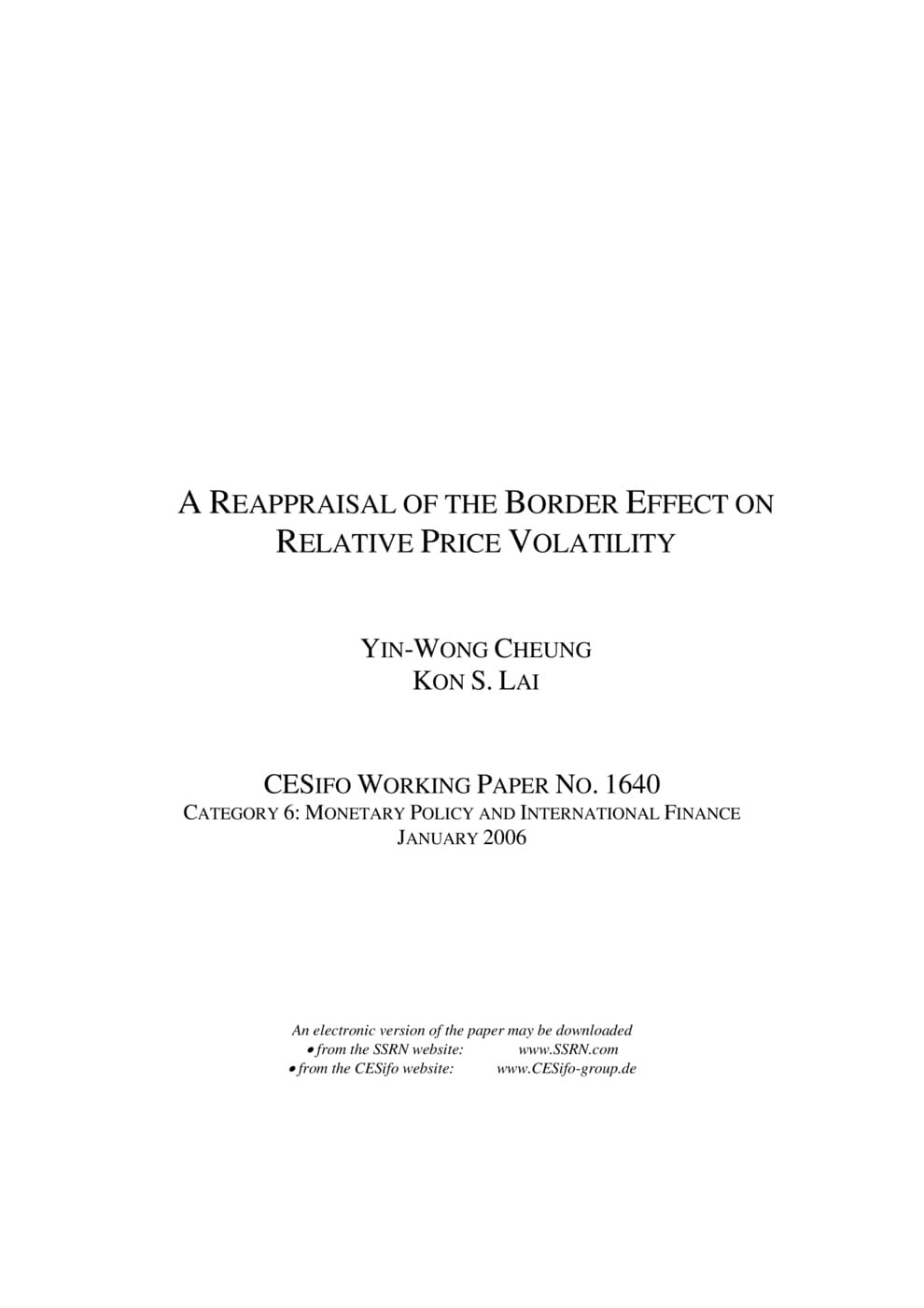A Reappraisal of the Border Effect on Relative Price Volatility
CESifo, Munich, 2006
CESifo Working Paper No. 1640

Engel and Rogers (1996) find that crossing the US-Canada border can considerably raise relative price volatility and that exchange rate fluctuations explain about one-third of the volatility increase. In re-evaluating the border effect, this study shows that cross-country heterogeneity in price volatility can lead to significant bias in measuring the border effect unless proper adjustment is made to correct it. The analysis explores the implication of symmetric sampling for border effect estimation. Moreover, using a direct decomposition method, two conditions governing the strength of the border effect are identified. In particular, the more dissimilar the price shocks are across countries, the greater the border effect will be. Decomposition estimates also suggest that exchange rate fluctuations actually account for a large majority of the border effect.
Fiscal Policy, Macroeconomics and Growth